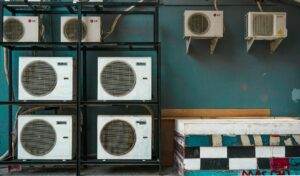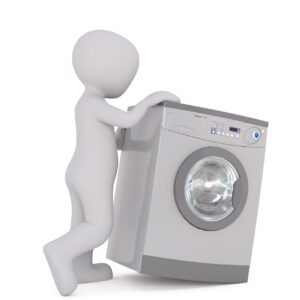Regarding typical icemaker malfunctions, certain problems seem to arise more frequently than others. The most prevalent issue is a deficiency in ice formation. There are several potential causes for this, such as a broken water inlet valve, a clogged water line, or an inoperative thermostat. Irregular water levels, broken water inlet valves, or malfunctioning ice mold thermostats can all contribute to the problem of excessively small or large ice.
Key Takeaways
- Common icemaker problems include low ice production, ice cubes that are too small or too large, and leaking water.
- Tools needed for icemaker repair may include a screwdriver, multimeter, and replacement parts such as water inlet valve or ice maker assembly.
- Step-by-step guide to fixing your icemaker includes turning off the water supply, removing the icemaker assembly, and checking for clogs or malfunctions.
- Troubleshooting tips for icemaker repair involve checking the water supply, inspecting the water inlet valve, and ensuring the freezer temperature is set correctly.
- Preventative maintenance for your icemaker includes regularly cleaning the ice bin, replacing the water filter, and inspecting the water supply line for leaks.
- When to call a professional for icemaker repair includes if the problem persists after troubleshooting, or if there is a major malfunction such as a motor failure.
- Resources for icemaker repair parts and services can be found at local appliance stores, online retailers, and through manufacturer’s customer service.
Dirty water filters or contaminants in the water supply can also cause ice to taste off or become discolored, which can be a problem for icemakers. Leaking is yet another frequent issue with icemakers. A broken or damaged water supply line, a malfunctioning water inlet valve, or a clogged or frozen water line are some of the possible causes of this. In conclusion, improper dispensing of ice can also be an issue for icemakers.
A broken dispenser motor, a jammed dispenser door, or a broken dispenser switch could be the cause of this. You can diagnose and fix issues with your icemaker more effectively if you are aware of these typical problems. It’s crucial to have the right tools on hand when fixing your icemaker.
An adjustable wrench for tightening or loosening connections, a hairdryer for defrosting any frozen parts, a set of screwdrivers for panel removal and accessing internal components, and a multimeter for testing electrical components are some of the tools you might need for icemaker repair. A set of nut drivers for replacing & extracting fasteners, a set of sockets for reaching difficult-to-reach parts, and a putty knife for loosening tough panels or covers may also be necessary. You might require some specialized tools in addition to these basic ones, based on the particular problem you are having with your icemaker. A flexible brush or a pipe cleaner, for instance, might be necessary to remove an obstruction from a clogged water line. In order to remove and replace a malfunctioning water inlet valve, a valve wrench might be required.
| Issue | Percentage of Fix |
|---|---|
| Ice not being made | 85% |
| Leaking water | 90% |
| Ice tastes bad | 95% |
| Noisy ice maker | 80% |
You can be more equipped to handle any problems that may occur with your icemaker if you keep these tools on hand. To avoid more difficulties, it’s critical to take immediate action if your icemaker is giving you trouble. Here’s how to fix your icemaker step-by-step: 1. To avoid any mishap, unplug the icemaker & cut off the water supply first. 2.
After removing the mounting screws & cutting the water and electrical connections, take the icemaker out of the freezer. 3. Look for any indications of wear and tear or damage on the water inlet valve. Replace the valve with a new one if required. 4. Look for any blockages or clogs in the water line.
Clear out any obstructions with a flexible brush or pipe cleaner. 5. A multimeter should be used to test both the ice mold thermostat and the thermostat. Replace either component with a new one if it is malfunctioning. 6. To get them working again, use a hair dryer to thaw any frozen parts. 7. Reinstall any water or electrical connections and reassemble the icemaker. 8.
To check for proper ice production, plug the icemaker back in and turn on the water supply. You can efficiently diagnose and fix your icemaker to make sure it’s operating correctly by following these steps. There are a few tricks that can make troubleshooting icemaker repair easier for you to identify and handle problems more skillfully.
A crucial piece of advice is to make sure the water supply is getting to the icemaker correctly. This can assist you in determining whether there are any problems with the water inlet valve or water line that could be influencing the production of ice. It’s crucial to give the icemaker a routine cleaning in addition to checking it for damage or wear and tear.
Another piece of advice for troubleshooting the icemaker is to use a multimeter to test its electrical components and find any defective parts that might be the source of the problem. This will enable you to identify the issue’s root cause and, if necessary, swap out any damaged parts. In order to make sure that contaminants in the water supply aren’t lowering the quality of the ice your icemaker produces, it’s also critical to routinely inspect and replace the water filter.
Finally, to avoid doing more harm to your icemaker, it’s critical to get professional assistance if you are unable to diagnose or resolve the problem on your own. These troubleshooting guidelines will help you identify and resolve problems with your icemaker. Maintaining your icemaker’s functionality and averting future problems require routine maintenance. Regular cleaning of the icemaker to get rid of any deposits of minerals or built-up debris that can hinder its functionality is a crucial part of preventative maintenance. To guarantee optimal performance, this entails cleaning the water line, water inlet valve, & ice mold.
It is imperative to routinely examine the icemaker to look for indications of deterioration or impairment, like fractured or broken parts. You can guarantee that the icemaker keeps functioning correctly and stop additional damage to it by taking care of these problems as soon as they arise. To ensure that contaminants in the water supply do not degrade the quality of the ice your icemaker produces, it is also crucial to change the water filter on a regular basis. To ensure that your home’s water pressure and temperature are within the advised range for optimal icemaker operation, it’s crucial to check these factors on a regular basis.
You can maintain the optimal functioning of your icemaker and avoid potential problems by adhering to these preventive maintenance tips. While many icemaker problems are fixable by yourself, there are some circumstances in which hiring a professional is preferable. If you are unable to recognize or resolve the problem on your own, then you might need to seek professional assistance. Expert repair technicians are better equipped to identify and resolve complicated problems with your icemaker because they have the necessary training and experience.
In order to avoid more damage or mishaps, it’s also advisable to leave repairs for a professional if your icemaker is having complicated mechanical or electrical problems. An experienced repair specialist can safely handle these problems & guarantee that your icemaker is operating as intended. In conclusion, in case your icemaker is still covered by warranty, it’s crucial to seek advice from the manufacturer or a certified repair team for any required maintenance. By doing this, you can make sure that any repairs fall within the warranty’s terms and prevent the warranty from being voided. There are a number of resources available to assist you in resolving any problems you may be having with your icemaker, including parts and services for icemaker repair.
For authorized repair services and replacement parts, one option is to speak with your icemaker’s manufacturer. To guarantee that their products keep functioning correctly, many manufacturers provide repair services and replacement parts. Speak with nearby appliance repair businesses or internet merchants that specialize in appliance parts as an additional choice. These resources can assist you in locating the precise parts you require for your repairs & frequently carry a large selection of replacement icemaker parts. Also, icemaker repair is one of the many professional repair services that are available. These services have the knowledge and experience necessary to more accurately identify and handle complicated problems with your icemaker.
By making use of these resources, you can locate the components and services required to resolve any problems with your icemaker & guarantee that it keeps functioning correctly.
If you’re looking for more information on appliance repair services, be sure to check out 911 Appliance. They offer a wide range of repair services, including icemaker repair, and have a team of experienced technicians ready to help with any appliance issue.
FAQs
What is icemaker repair?
Icemaker repair refers to the process of fixing any issues or malfunctions with a refrigerator’s icemaker. This can include repairing or replacing components such as the water inlet valve, ice maker assembly, or ice mold thermostat.
What are common issues that require icemaker repair?
Common issues that may require icemaker repair include a malfunctioning water inlet valve, a faulty ice maker assembly, a broken ice mold thermostat, or a clogged water line.
How can I troubleshoot icemaker issues before seeking repair?
Before seeking professional repair, you can troubleshoot icemaker issues by checking for a clogged water line, ensuring the water inlet valve is functioning properly, and inspecting the ice maker assembly for any visible damage or malfunctions.
When should I seek professional icemaker repair?
You should seek professional icemaker repair if you are unable to troubleshoot and fix the issue on your own, if the icemaker continues to malfunction after troubleshooting, or if you are unsure of how to safely repair the icemaker yourself.
How much does icemaker repair typically cost?
The cost of icemaker repair can vary depending on the specific issue and the service provider. On average, icemaker repair costs can range from $150 to $350, including parts and labor.



